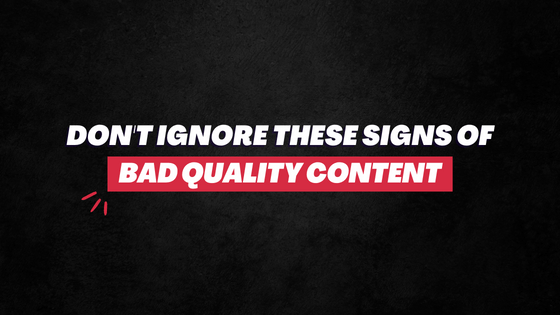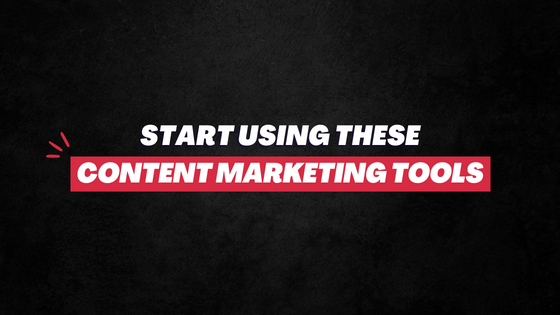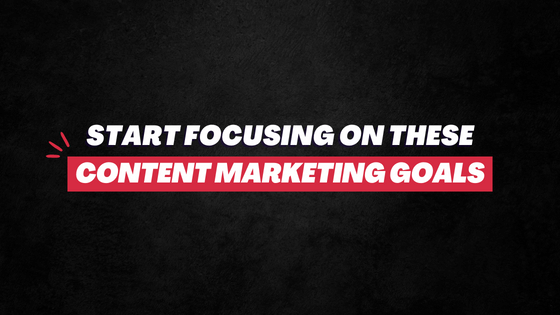If you can’t measure it, you can’t improve it.
This is why asking how to measure content marketing ROI, overall performance and effectiveness is quite essential.
Now, how do you really do it?
It isn’t very difficult. But then it isn’t quite easy either.
There’s a reason, after all, why…
52 percent of B2B marketers believe measuring the ROI of content marketing program is a big challenge. (Source)
Heck, so many of them don’t even have proper clarity on content marketing success.
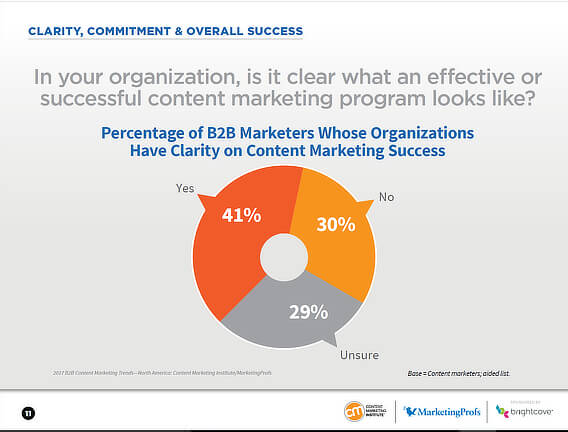
Let’s un-break it through a more definite and methodical process.
Recommended Read: What Is Content Marketing (A Basic Explanation)
What Are Your Content Marketing Goals And Objectives?
This is the foremost question you should ask.
For different businesses, the goals vary. Here are some of the common content marketing goals:
- Driving traffic
- Educating prospects/customers
- Engagement
- Lead generation
- Converting
- Upselling
- Brand awareness
- Building reputation
- Brand loyalty
- Making fans
Recommended Read: 14 Content Marketing Goals Example to Pursue (B2B, B2C)
Now, if you bring together these smaller, specific goals into broad categories, the two main content marketing objectives are:
- Sales
- Brand building
And, of course, the third one— BOTH.
So, what exactly are your content marketing goals?
If there’s no unique or “exact” goal, pick any of the two broad objectives.
Now, next, find your goals on the customer journey map. (Let me explain…)
Customer Journey Map: How It Looks?
A customer journey is a complete sum of experiences that a person goes through when interacting with your brand, starting FROM getting to know you TO advocating for you.
Here’s how HubSpot defines it:

The stages of the customer journey vary for different people/businesses.
However, here’s how it generally looks:
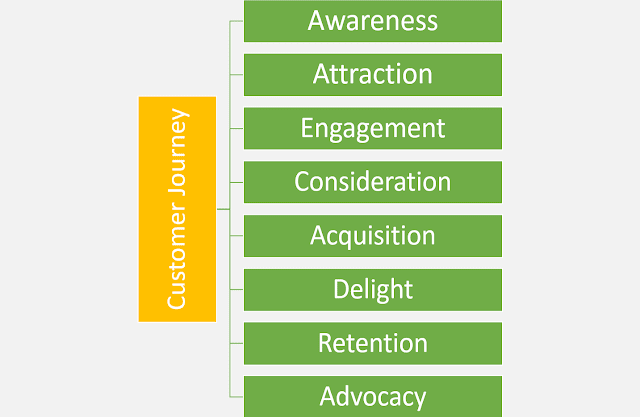
A person goes through this journey FROM being a stranger to your brand (“Awareness”) TO not only purchasing your products (“Acquisition”) but also advocating it (“Advocacy”).
Your content marketing strategy plays the primary role here in promoting the prospects from one stage to another.
You deploy different forms of content in different stages to funnel down the prospects toward sales, retention, and advocacy.

Now, on this customer journey map, you can easily position any and every content marketing goal.

Why do We Need A Customer Journey Map?
The point of having a customer journey map and then positioning your content marketing goals on it is simple… (It has two benefits)
1. When you’re trying to measure content marketing ROI, according to your goals, you can solely focus on a particular stage and all the relevant metrics that are important to that stage.
This makes measuring performance easier and more convenient.
Remember, there are too many performance metrics out there. All of them are important. But not all of them are relevant to you. Customer journey helps you know which are relevant to your content marketing goals.
2. Even when sales and branding building (the “broad categories” are your ultimate content marketing goal, you can follow this systematic approach.
You should check the metrics that are relevant to different stages of the customer journey step-by-step, starting from Stage 1 to the last one.
This systematic process of measuring content marketing success makes identifying problems and spotting loopholes so much easier.
EXAMPLE #1
Say, I want to build product awareness.
I am creating all the necessary content to aware prospects of my products.
How do I tell if my content is working or not?
I simply look at my customer journey, see “Product Awareness” falls in the ‘Consideration Stage’. And then I look at all the metrics that are relevant to this Consideration stage.
At the same time, since I know which stage, I can also be certain of the cause of the problem – why is this metric poor?
I would know which type of content and distribution platforms are at fault.
So, fixing them becomes easier.
EXAMPLE #2
Say, my content marketing goal is to sell.
Per my customer journey, this goal falls in the ‘Acquisition stage’.
So, to measure the ROI of my content marketing strategies, I would focus primarily on metrics that are relevant to this Acquisition stage.
At the same time, if these metrics are poor, I would know that my efforts in this stage and the previous stages have failed. (Maybe the content on the sales page isn’t good!)
Now I can analyze this and the previous stages to identify why the metrics in the ‘Acquisition stage’ is poor – which type of content and distribution platforms are at fault.
This systematic process that follows the customer journey map makes the entire process quite simpler, quicker, and more convenient.
Got it?
(Note: The customer journey map, goals, and examples here – they are quite basic. For different people, the bigger their business is and the more products they have, the more complex it all could be.)
Now, the most important question… What metrics are relevant to which stage?
Customer Journey Metrics to Measure Content Marketing
Per my basic customer journey map here, here are some of the relevant metrics or Key Performance Indicators (KPI) of each stage (all of them are directly related to your content marketing strategy):
Awareness: Social media reach, number of brand mentions, number of brand searches
Attraction: Number of website visitors, number of social media likes/follows
Engagement: Website session duration, average page views per visit, number of email subscribers, number of social media shares.
Consideration: Number of visitors on the sales page, number of inquiries, number of “hot” leads generated
Acquisition: Number of sales
Delight: Number of reviews/feedback, open rate, and conversion of after-sale emails
Retention: Number of existing customers re-purchasing, number of subscriptions to loyalty program
Advocacy: Net promoter score (NPS), number of new customers brought in through the affiliate program
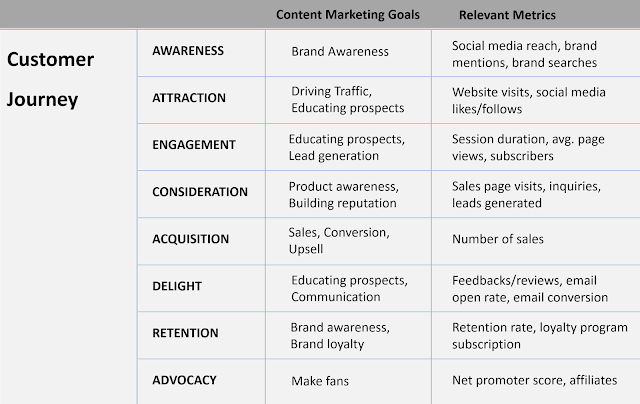
Pick the relevant metric from your analytic tool.
And then identify the ROI of either a part of your content marketing strategy that’s limited to one stage on the customer journey map – OR the success of your whole content marketing ecosystem.
To sum up…
How to measure content marketing ROI?
- Create buyer persona(s).
- Map a customer journey according to that buyer persona.
- Define content marketing goals on each of the stages on this customer journey map.
- Choose the relevant metrics according to your primary and secondary content marketing goals.
- Measure those metrics.
- Compare the numbers to the investment (in time and money) you made in creating and distributing content.
- Is it good? Is it bad? You decide.
Recommended Read: 15 Steps To A Killer Content Marketing Strategy
If you have any questions, tweet to Spell Out Marketing.
If you’re having problems measuring the ROI of your content marketing, shoot me an email. I would love to help. 🙂
